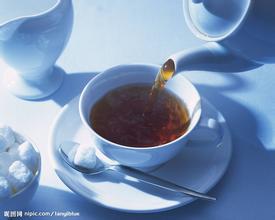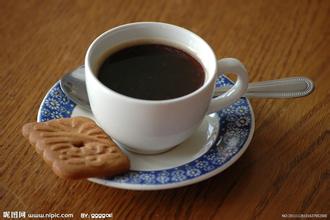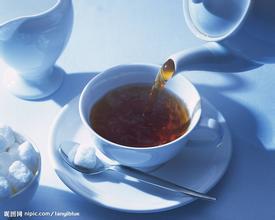Coffee blending basic low-roasted coffee can be mixed with high-roasted coffee
1. 40% of the "city-wide" baked Colombian Tuluni coffee-for better taste (it can also be other Colombian coffee, Nicaraguan La Illusion, or Brazilian Monte Carmelo coffee)
20. 30% French roasted Mexican Tres Flechas coffee-forming a clear, charred taste (or other Mexican coffee)
30% of city-baked Kenyan Estate coffee-forms a bright sour taste (it can also be refreshing Costa Rican coffee or other Central American coffee) [if you want to make a unique "Viennese coffee" with a good taste and a good sweet and bitter taste, but still sour, but not charred, you can try the following mix
40. 60% of Colombian coffee baked by "the whole city"
Fifty or forty percent of the city-baked Kenyan coffee, or bright Central American coffee, uses balanced, moderately sour, good-tasting Central American coffee, and can also mix the same kind of coffee with different roasting degrees.
60% of the city-wide baked Colombian Tuluni, or Nicaraguan La Illusion coffee, etc.
70. 40% of the same kind of coffee baked in the city (roasted until the end of the explosion)
The exhibition we learned is a good place to taste all kinds of common coffee combinations, and the major bakeries bring what they think is the best coffee mix here for everyone to taste. At the 1998 exhibition of the American Special Coffee Association, many "Viennese coffees" were mixed with 30%, 40% Kenyan coffee to highlight its acidic taste. This blend improves the sour taste of coffee and tastes much better than Kenyan coffee.
The blending of drip filter coffee: mocha-Java coffee, people can't help thinking that blended coffee is as old as home-made coffee. A thick, average-quality "Java coffee" combined with a moderate, floral, more acidic "mocha", which was the only two kinds of coffee at the time. Is it just a habit to mix these two kinds of coffee together? Or is it because this combination can improve their taste? In any case, the combination of these two kinds of coffee can make coffee drinks with richer export flavor than either of them. Even with the simple coffee roasting and making tools at that time, it was incredible to produce such a rich flavor of "mocha-Java" blended coffee. It is not difficult to make a very good coffee from two very good coffees. The purpose of mixing coffee commercially is to make coffee drinks with quite good export taste from several kinds of coffee that are not of very good quality. The original mocha-Java coffee is made of Yemeni mocha coffee and Indonesian Java coffee. But you can usually use any kind of coffee from Indonesia and mix it with any kind of coffee from Ethiopia or Yemen. The usual blending ratio is one-to-one; or there are slightly more coffee beans in Indonesia, such as 55:45. The very good result that we have spelled out is a combination of Hirazi or Dhamari coffee beans from Yemen (or "Hara" coffee beans from Ethiopia) and Batak Mandheling (washed beans) or Sulawesi Toraja (washed beans) from Sumatra.

Important Notice :
前街咖啡 FrontStreet Coffee has moved to new addredd:
FrontStreet Coffee Address: 315,Donghua East Road,GuangZhou
Tel:020 38364473
- Prev

Can high-roasted Brazilian coffee be matched with low-roasted Harald coffee?
Introduction to coffee beans: highly roasted Brazil has a relatively clear sour taste. The Harald flavor baked in the city is less wild and more calm. Between urban baking and deep urban baking, the Kenyan flavor is rich and steady, less active and more heavy. How does this coffee perform? Cup test evaluation: there is an obvious floral aroma in the aroma.
- Next

Coffee blending knowledge the three benefits of coffee blending introduce stable flavor, balanced taste and reduced taste.
1. Stable flavor because coffee beans are a kind of crop, the flavor of even the same kind of coffee beans will be different from year to year, so mixing several kinds of coffee beans can solve this problem very well. can make the taste basically the same every year. two。 Balanced taste because one of the features of the Italian coffee machine is that it will bring the most prominent flavor of the coffee beans.
Related
- Does Rose Summer choose Blue, Green or Red? Detailed explanation of Rose Summer Coffee plots and Classification in Panamanian Jade Manor
- What is the difference between the origin, producing area, processing plant, cooperative and manor of coffee beans?
- How fine does the espresso powder fit? how to grind the espresso?
- Sca coffee roasting degree color card coffee roasting degree 8 roasting color values what do you mean?
- The practice of lattes: how to make lattes at home
- Introduction to Indonesian Fine Coffee beans-- Java Coffee producing area of Indonesian Arabica Coffee
- How much will the flavor of light and medium roasted rose summer be expressed? What baking level is rose summer suitable for?
- Introduction to the characteristics of washing, sun-drying or wet-planing coffee commonly used in Mantenin, Indonesia
- Price characteristics of Arabica Coffee Bean Starbucks introduction to Manning Coffee Bean Taste producing area Variety Manor
- What is the authentic Yega flavor? What are the flavor characteristics of the really excellent Yejasuffi coffee beans?

